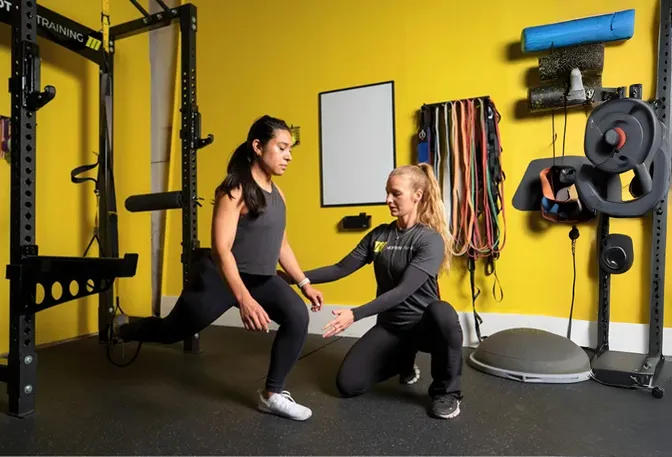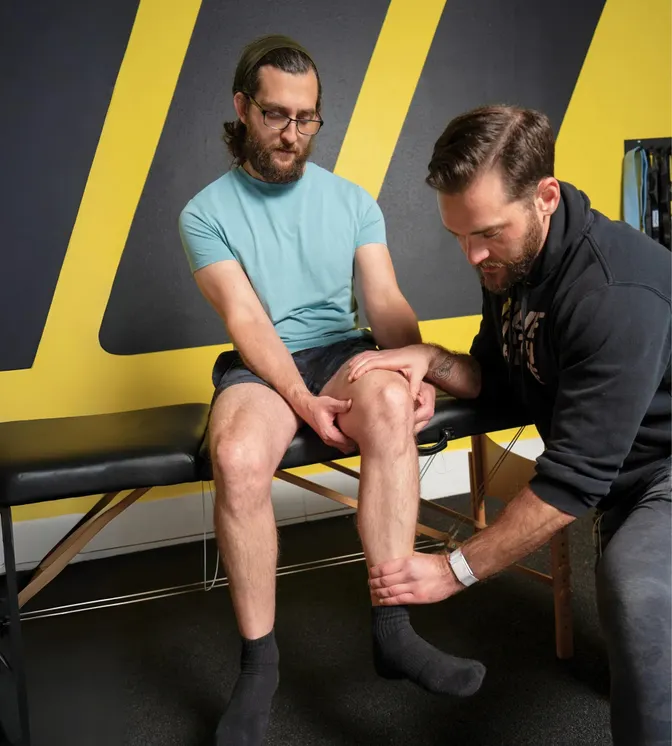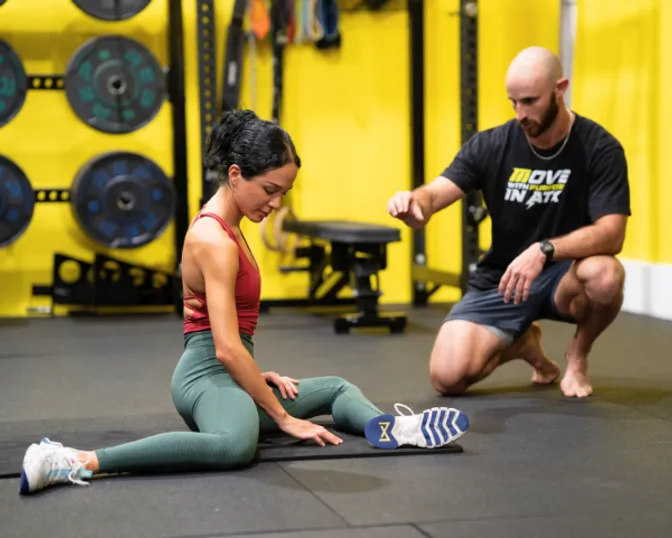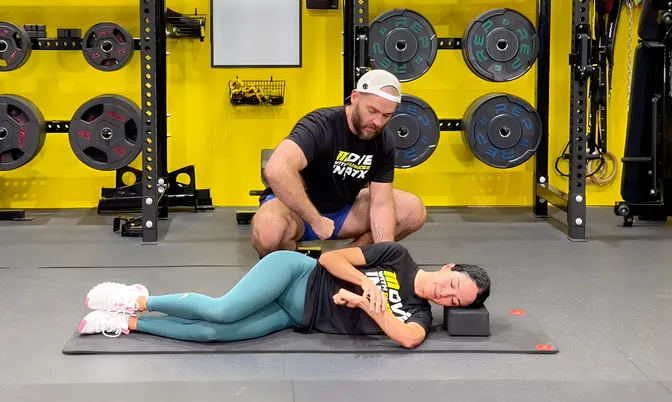The Mobility Pyramid: How to Prioritize Training When Everything Hurts
July 3, 2025 | Pain & Performance
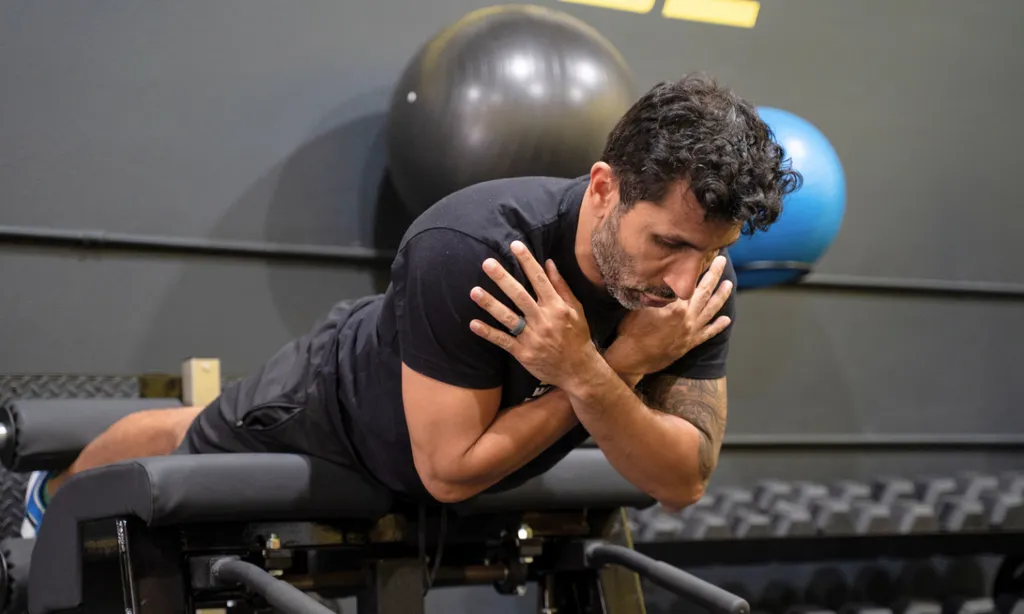
Your hips feel tight. Your back aches. Your shoulders can’t rotate. Everything hurts—and you don’t know where to start.
That’s where the Mobility Pyramid comes in.
At Motive Training, we’ve worked with hundreds of clients in this exact situation: multiple problem areas, unclear priorities, and confusion around which joint to focus on first. Without a strategy, it’s easy to jump from drill to drill without ever seeing results. So, we created a structured way to break things down—a framework that not only helps you feel better faster but also empowers you to understand why your body is acting the way it is.
Step One: Start With Assessment, Not Assumption
Pain can be misleading. You might feel the issue in your knees, but that doesn’t mean your knees are the problem. In many cases, the source of your pain isn’t even the same joint that’s giving you symptoms.
That’s why every client starts with a Functional Range Assessment. It’s the most detailed way we can measure joint health, determine which tissues are underperforming, and map your system’s biggest limitations.
This structured assessment reveals:
- Which joints are underperforming or restricted.
- Where you’re compensating—often unconsciously.
- How your range, rotation, and control compare to functional baselines.
Without this clarity, even the best mobility drills become guesswork. And we don’t guess—we assess.
Step Two: Understand the Pyramid Structure
The Mobility Pyramid is a hierarchy. It’s not about hitting every joint equally—it’s about restoring what matters most in the right order. This three-tiered approach gives you a system to follow when your body feels like it’s falling apart.
Level 1: Address the Root Joint Limitation First
Once your FRA is complete, we use the data to identify your biggest limiter. This is the joint that’s not contributing what it should—and as a result, it’s forcing other joints to work overtime.
If your spine can’t extend segmentally, your shoulder blade will try to compensate. If your hips don’t internally rotate, your lumbar spine will bear the brunt of every hinge and twist. This level is where we stop the bleeding.
This stage might feel slow at first. But foundational improvements here unlock every level above it. Strength, endurance, even pain relief—they all stem from restoring control to the deepest joint systems in your body.
Level 2: Train the Pain-Proximal Joint (When It’s Relevant)
Just because the pain isn’t the problem doesn’t mean we ignore it. If the painful joint is inflamed or limited, we still give it attention—but we let the FRA guide us on how to approach it.
Sometimes, the painful joint needs light, controlled stimulus. Other times, it’s simply reacting to dysfunction elsewhere. We train it based on the role it plays—not just because it hurts.
This keeps your programming honest. It also respects the nervous system: you can’t build resilience in an area that’s flared up or neurologically threatened. With this approach, we desensitize the joint while fixing the cause upstream.
Level 3: Reintegrate With Global Patterns
You can’t live in isolation drills forever. Eventually, mobility must become movement—real, usable movement that transfers to squats, lunges, running, sport, or just picking up your kid without wincing.
Once joint-level control improves, we progress into compound patterns. This is where things get exciting. It’s also where most mobility programs start prematurely.
We might train rotational slams, coiling core strategies, or kettlebell flows—whatever makes sense for your goals and your joint readiness. But the key is that it’s earned, not assumed.
Why the Pyramid Works
Because it’s grounded in real data. Because it respects your body’s history. And because it puts long-term results ahead of short-term relief.
Every step of the Mobility Pyramid reflects how we program at Motive—whether it’s in 1-on-1 coaching or in our Pain Mitigation Training curriculum.
This isn’t about being pain-free today. It’s about building a body that can move well tomorrow, next month, and five years from now.
A Real Example From Our Austin Studio
We had a client—remote tech worker, active lifestyle, mid-30s—with consistent shoulder discomfort. He was diligent. Foam rolled daily. Did his banded warmups. Even did his own research.
But nothing stuck.
Once we assessed him, we found the problem: almost no thoracic extension. His spine moved like a brick. We spent four weeks working on segmental flexion and extension drills. Once those started to click, his shoulder symptoms disappeared—without us directly touching the shoulder for most of that time.
His story isn’t rare. It’s how most chronic pain works. The site of the problem isn’t the cause.
This is why the Mobility Pyramid works. It removes the guesswork. It helps you see your body as a system, not a collection of isolated problems. And it gives you a roadmap to follow—so you’re not bouncing from foam rollers to TikTok stretches hoping something finally sticks.
If you’re ready to stop chasing symptoms and start making progress that lasts, we can help. Schedule your assessment, and we’ll show you exactly where to start.
Written by
Brian Murray, FRA, FRSC
Founder of Motive Training
We’ll teach you how to move with purpose so you can lead a healthy, strong, and pain-free life. Our headquarters are in Austin, TX, but you can work with us online by signing up for KINSTRETCH Online or digging deep into one of our Motive Mobility Blueprints.

